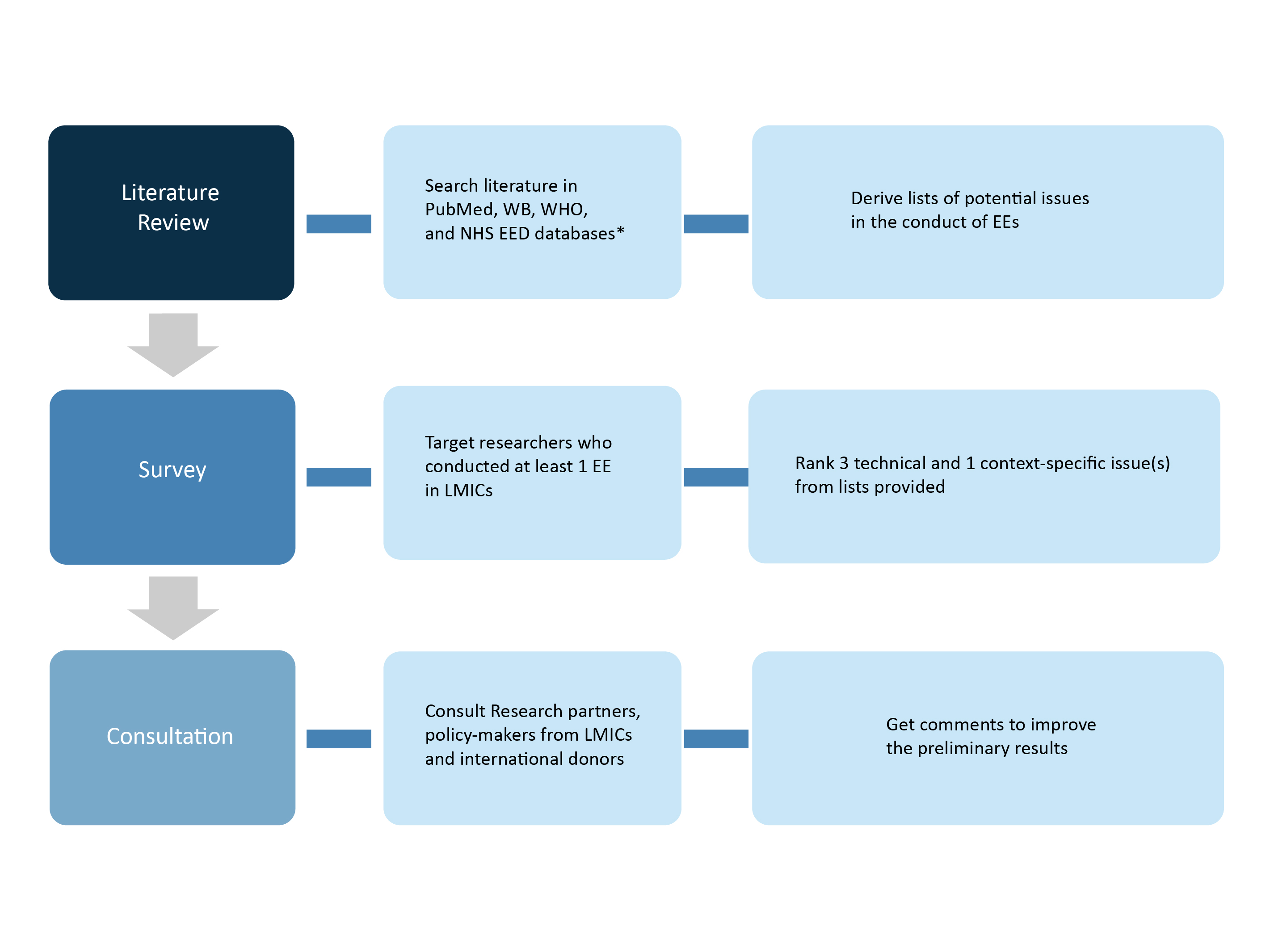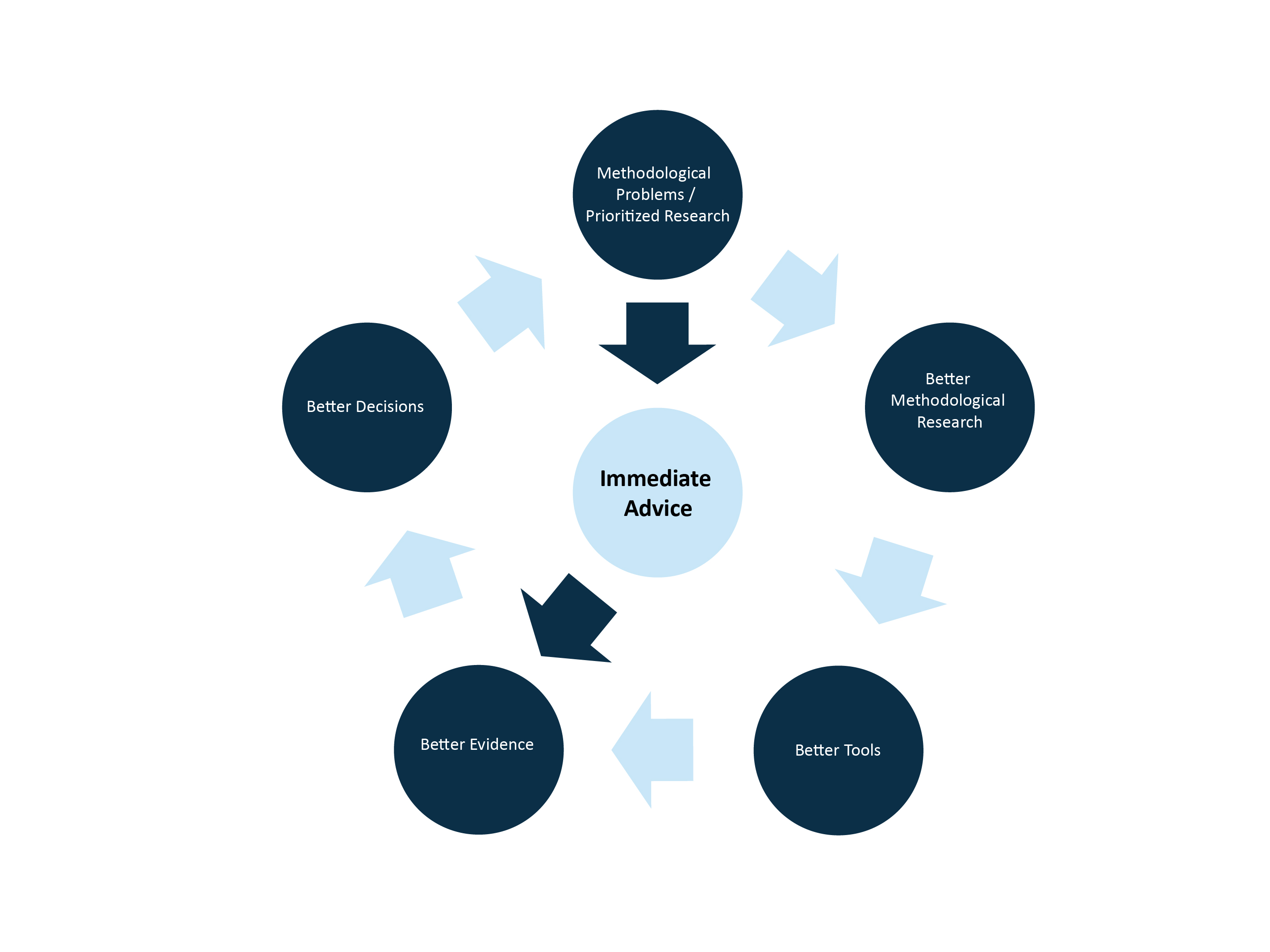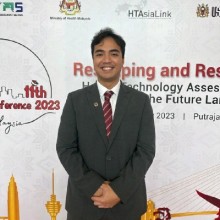What is GEAR and How to use GEAR?
What is GEAR Online Resource?
To start, we introduce you to GEAR online resource’s several features:
- Mind mapping that provides solutions (long- and short-term) to common and important methodological difficulties
- Comparisons of recommendations from selected health economics guidelines
- “Ask an Expert,” a question-and-answer feature that allows users to pose questions to experts on issues that are not dealt with in the other features of the website
Understanding GEAR
Do you want to understand a little more on what GEAR can offer to you? Watch this animation that explains in the simplest way possible the features of GEAR.
GEAR Project Background & Purpose
You are a researcher who is responsible for conducting an economic evaluation to be used as evidence for healthcare policymaking in your country. After doing some research, you’re sitting in front of your computer, trying to decide what to do now that you’re facing creation of your model.
What type of modelling should you do?
What health outcome should you use?
How do I overcome data limitations in conducting economic evaluation for my country?
How do I correctly present my research results?
These are some of the questions that researchers contend with when they begin working on economic evaluations. To address these concerns, the Guide to Economic Analysis and Research (GEAR) online resource was born.
GEAR provides various ways to solve specific methodological difficulties researchers may encounter in the conduct of their studies. The resource is designed as a global public good dedicated towards helping low- and middle- income countries (LMICs) academics, researchers and economic evaluation practitioners worldwide conduct high quality, policy relevant healthcare research. GEAR compiles and resolves gaps arising from methodological issues in the conduct and the use of economic evaluations. The resource will explore the issues in the conduct and the use of these evidences, potential solutions to the issues and future research questions to address these issues but also will.
The site is based on the working paper of a HITAP International Unit study in 2015 that the International Decision Support Initiative (iDSI) supported. The paper, “Identifying Priority Methodological Issues in Economic Evaluation in Low- and Middle-Income Countries: Finding the Holy Grail,” details the results of a literature review and questionnaire used to survey national and international experts, academics, public health officials, and relevant stakeholders on economic evaluation methodological issues. The respondents ranked the issues by order of priority or importance per their own experiences working in their country and/or abroad as well as propose some solutions that they consider relevant. These results were analysed, triangulated with research questions proposed by the research team based on the solutions nominated, and presented on the database. The prioritization of methodological problems and finding solutions to these issues will lead to methodological research that will yield improved tools for the conduct of economic evaluations. This database complements this work and provides immediate solutions to researchers’ needs.
The GEAR online resource can be a useful guide to researchers. However, after consulting the GEAR and you’re confronting your research again, remember the wise words from the great scientist Albert Einstein:
“After a certain high level of technical skill is achieved, science and art tend to coalesce in aesthetics, plasticity, and form. The greatest scientists are always artists as well.”
The GEAR online resource is supported by the International Decision Support Initiative (iDSI), through the grant from the Bill and Melinda Gates Foundation (BMGF) and the Department of International Development (DFID), UK, and the Thailand Research Fund (TRF).
Purpose 1
To explore the methodological issues that researchers face in low- and middle-income countries
Purpose 2
To link HTA methodological issues to different potential solutions
Purpose 3
To provide the visual mapping of methodological issues that lead to potential methodologies
Purpose 4
To explore guidelines and other governing issues that researchers encounter
Purpose 5
To act as an open discussion forum for methodological issues between experts and researchers globally
Purpose 6
To ensure the continued improvement of economic evaluation methods through surveys and analysis of GEAR content and updates
Purpose 7
To provide an avenue for registered users access to referenced research papers as well as download mind maps, reports, and materials in the GEAR
Purpose 8
To allow registered users to participate in and have information on the surveys (e.g. methodology, demographics, research questions)
Method & Process
Economic evaluations are increasingly becoming of interest to low- and middle-income (LMIC) governments, especially those keen to make efficient health care systems. However, economic evaluations can be useful for policy decisions only when they are conducted accurately and reported properly. Because economic evaluation is a relatively new discipline in LMICs compared to high-income countries (HICs), it’s important to learn the methodological problems in conducting economic evaluations in LMICs. Information from this study and the GEAR database can help inform scholars to overcome these methodological barriers in both the short (providing short-term advice and solutions) and long term (e.g. better tools based on methodological research).
A. Identifying Methodological Issues in Low- and Middle-Income Countries

Who answered our survey and told us what challenges they face in health economic evaluations? What are they like? We have the following graphs to show you the characteristics of our respondents and understand the background of the results of our study.
B. Guide to Economic Evaluation and Research Online Content


iDSI
The International Decision Support Initiative (iDSI) is a sustainable, adaptable, international mechanism to provide policymakers (at sub-national, national, regional and international levels) with coordinated support in priority-setting as a means to Universal Health Coverage (UHC). The initiative shares experiences, showcases lessons learned, and identifies practical ways to scale technical support for more systematic, fair and evidence informed priority-setting processes. Its interventions help to improve access to effective health interventions and the quality and efficiency of health care delivery, and to help elevate the value of priority setting as essential for attaining and sustaining UHC.
For more information, visit the page: http://www.idsihealth.org

Kalipso Chalkidou

Amanda Glassman

Karen Hofman

Anthony Culyer

Tommy Wilkinson

Ryan Li

Francis Ruiz
HITAP | HIU
The Health Intervention and Technology Assessment Program (HITAP) is a semi-autonomous research unit under Thailand’s Ministry of Public Health. It was established in 2007 as a non-profit organization in order to take responsibility for appraising a wide range of health technologies and programs, including pharmaceuticals, medical devices, interventions, individual and community health promotion, and disease prevention as well as social health policy to inform policy decisions in Thailand. The work of HITAP have been used to informed coverage decisions of those health technologies under the public health plans.
In 2013, HITAP established a HITAP International Unit (HIU), drawing on its experiences locally and internationally, to work at the global level with overseas development aids, international organizations, non-profit organizations, and overseas governments to build capacity for health technology assessment. HIU is currently working with ministries of health in various countries in the region such as Bhutan, India, Indonesia, Myanmar, Nepal, the Philippines, Vietnam.
For more information, visit pages: http://www.hitap.net/en and http://www.globalhitap.net

Francis Carlo Panlilio

Benjarin Santatiwongchai

Serah Clarence

Nann Vongpuapan

Saudamini Dabak

Waranya Rattanavipapong

Yot Teerawattananon
Thailand Research Fund
The Thailand Research Fund (TRF) was established in response to the 1992 Research Endowment Act and although it is part of the government system, it lies outside the government administrative bureaucracy. This freedom allows great efficiency in research support. Since its creation, TRF has remained focused on its main duty: supporting at both local and national levels the creation of a knowledge-base to help those tackling societal problems. TRF’s main role is to assist in the development of researchers and research-based knowledge through making research grants and assisting with research management.
For more information, visit the page: http://www.trf.or.th/eng
